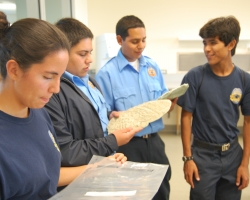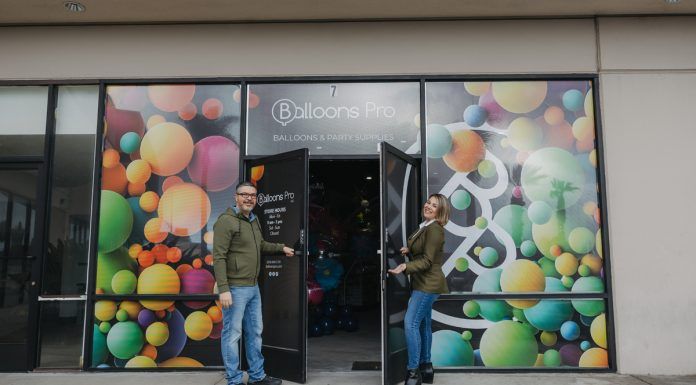Chula Vista Crime Lab Manager Craig Ogino turned to a room full of students and posed the following question:
“When someone gets shot in the head, where does the blood go?”
“Everywhere!” was the gleeful reply from a room full of high school students, part of a forensics class at Otay Ranch High School.
After a few nervous giggles the students were back to work, reviewing actual crime scenes with actual forensic techniques-and in the police station, no less.
About 30 students were welcomed to the Chula Vista Police Department headquarters on Monday for a crash course in forensic techniques, taught by the experts of that field.
Using math and forensic biology, the students, ninth through twelfth graders, analyzed blood spatter evidence to determine if a a suspect’s story held up to scientific scrutiny. It didn’t.
Vincent Martinez coordinates the Academy of Criminology and Justice at Otay Ranch. He said for about half of the students in the room, criminal justice is the career they’ll be pursuing.
“We tell kids when they join, you may want to pursue this career after being exposed to it, you may not. But if you’re interested in it, it’s a great opportunity to meet mentors, in this case Mr. Ogino … if you have a general interest in this, it’s an awesome program,” said Martinez. At completion, the students will get a letter of commendation from Chief of Police David Bejarano, something Martinez said can’t hurt when it comes time to apply for a job.
Despite the occasional crackup, Martinez said his students take their work seriously. On a day like today, when the class will be viewing actual crime scene photos, Martinez said composure is even more important.
“We told them, these are real crimes and real victims, and these victims have families,” said Martinez. He said he was confident his class would handle the topics with maturity.
Even as a ninth grader, Elisa Alcala said she views the forensics academy as a stepping-stone to what she hopes will be a career in law enforcement. She admitted that some of her inspiration came from television shows like CSI that dramatize the work of crime scene investigators, but she also has a closer connection to the profession.
“One of my uncles is a police officer,” said Alcala. Alcala said she thought the hands-on experience the CVPD has provided would help her grasp the complex concepts they work with in class.
The popularity of crime scene shows has created an increased interest in forensic careers in recent years. Incorporating television can be a way to help kids connect with the subjects they’re working on, said math teacher Anne Marie Shaw. Her classes occasionally watch the show Numb3rs, a CBS program focusing on FBI agents who use complex mathematics to solve crimes. Shaw said the program, which uses some very advanced principles, helps students to connect the class work with real life, even if the real life examples happen to be on TV.
“The math that they’re using (on the show) is calculus and pretty intricate statistics and probability, so it’s way beyond them. But it shows them ‘Yeah, if you do this and you move up the ladder, eventually you will be able to use the theorems they use on the show,'” said Shaw. She said she hoped her students would have an increased desire to learn math after they see what it can do in real world applications.
Ogino said the department believes in programs like the forensics academy, not only as a way to give back to the community, but as a way to increase the professionalism of their own staff.
“For 29 years I worked in San Bernardino, I was the lab director there. And what frustrated me was that every time we would train these criminalists how to do this, they would go back home,” said Ogino. He hopes the partnership between local schools and the police department will inspire more home grown forensic professionals who will be likely to stay put.

















